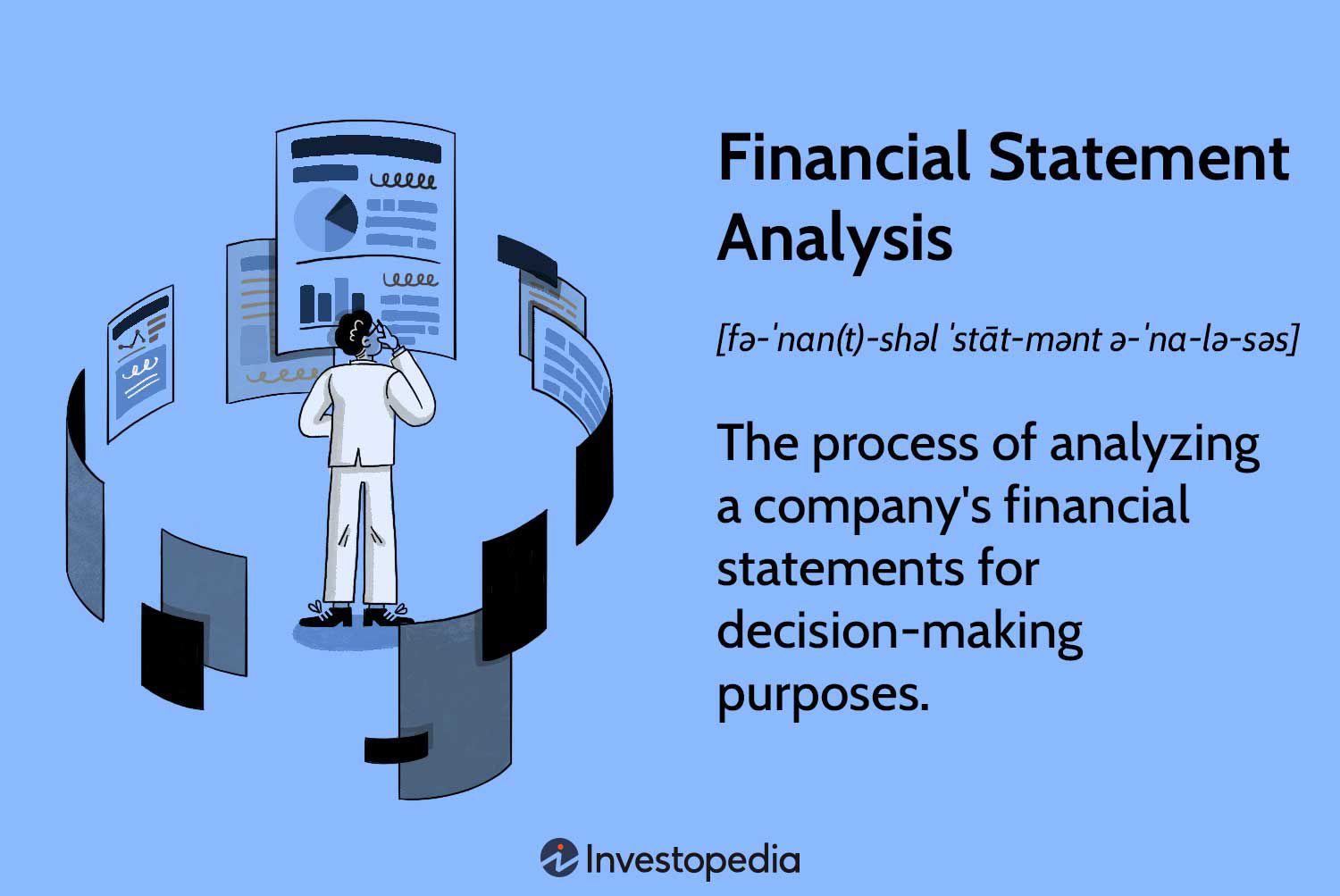List Of Contents
Financial statement analysis is a critical tool for individuals and businesses alike to assess the financial health and performance of a company. By examining a company’s financial statements, including the balance sheet, income statement, and cash flow statement, stakeholders can gain valuable insights into its operations, profitability, and overall financial stability. This 1000-word article explores the fundamentals of financial statement analysis, its key components, and how it goes beyond mere number-crunching to inform strategic decision-making.
Introduction
Financial statement analysis is the process of evaluating and interpreting a company’s financial statements to assess its financial performance and make informed decisions. It serves as a cornerstone of financial management and decision-making for investors, creditors, management, and other stakeholders.
The Key Financial Statements
1. Balance Sheet
- Assets and Liabilities: The balance sheet provides a snapshot of a company’s financial position at a specific point in time, detailing its assets, liabilities, and shareholders’ equity.
- Liquidity and Solvency: Analysts use the balance sheet to assess a company’s liquidity (ability to meet short-term obligations) and solvency (ability to meet long-term obligations).
2. Income Statement
- Revenue and Expenses: The income statement shows a company’s revenues, expenses, and net income over a specific period, typically a fiscal quarter or year.
- Profitability: Analysts use the income statement to gauge a company’s profitability and assess its ability to generate earnings.
3. Cash Flow Statement
- Operating, Investing, and Financing Activities: The cash flow statement breaks down cash flows into three categories: operating, investing, and financing activities.
- Cash Flow Analysis: This statement helps assess a company’s ability to generate cash and manage its cash flows effectively.
Ratios and Metrics
1. Liquidity Ratios
- Current Ratio: Current assets divided by current liabilities, indicating a company’s ability to cover short-term obligations.
- Quick Ratio: (Current assets – Inventory) divided by current liabilities, offering a more conservative measure of liquidity.
2. Profitability Ratios
- Gross Margin: (Gross profit / Revenue) x 100, measuring the profitability of a company’s core operations.
- Net Profit Margin: (Net income / Revenue) x 100, revealing the portion of revenue that translates into profit.
3. Solvency Ratios
- Debt to Equity Ratio: (Total debt / Shareholders’ equity), indicating the proportion of financing provided by debt compared to equity.
- Interest Coverage Ratio: (Operating income / Interest expense), assessing a company’s ability to meet interest payments.
4. Efficiency Ratios
- Inventory Turnover: (Cost of goods sold / Average inventory), measuring how quickly a company sells and replaces its inventory.
- Accounts Receivable Turnover: (Net sales / Average accounts receivable), showing how efficiently a company collects payments from customers.
Beyond the Numbers: Qualitative Analysis
Financial statement analysis goes beyond crunching numbers. It involves qualitative assessments that provide context and a deeper understanding of a company’s financial health.
1. Industry Analysis
- Comparative Analysis: Comparing a company’s financial ratios to industry benchmarks can reveal strengths and weaknesses.
- Market Trends: Understanding industry trends, market dynamics, and competitive forces is essential for context.
2. Management Assessment
- Management’s Competence: Evaluating the competence and experience of a company’s management team.
- Corporate Governance: Assessing the effectiveness of corporate governance practices and board oversight.
3. Risks and Opportunities
- Risk Assessment: Identifying and evaluating financial, operational, and market risks that could impact a company’s future performance.
- Growth Potential: Recognizing growth opportunities and assessing a company’s strategic plans.
The Importance of Trend Analysis
Examining financial statements over multiple periods allows for trend analysis, revealing a company’s financial trajectory.
- Year-over-Year Analysis: Comparing financials from one year to the next can highlight growth or decline trends.
- Common-Size Statements: Expressing financials as percentages of revenue can uncover changing cost structures.
Practical Applications
Financial statement analysis serves various purposes for different stakeholders:
1. Investors
- Investment Decisions: Investors use financial statement analysis to make informed investment choices.
- Risk Assessment: It helps assess the risk associated with potential investments.
2. Creditors
- Credit Risk Evaluation: Lenders use financial statements to evaluate the creditworthiness of borrowers.
- Loan Terms: Financial analysis informs loan terms and interest rates.
3. Management
- Strategic Planning: Management uses financial statement analysis to inform strategic planning and resource allocation.
- Performance Evaluation: It aids in evaluating the company’s performance against its goals.
Conclusion
Financial statement analysis is not a one-size-fits-all approach. It requires a combination of quantitative and qualitative assessments to provide a comprehensive view of a company’s financial health and performance. While the numbers on financial statements are essential, understanding the context, industry dynamics, and potential risks and opportunities is equally crucial.
In an ever-changing business environment, the ability to interpret financial statements accurately and make informed decisions is a valuable skill. Whether you’re an investor, creditor, or part of a company’s management team, the basics and beyond of financial statement analysis empower you to navigate the complex landscape of financial decision-making with confidence.

